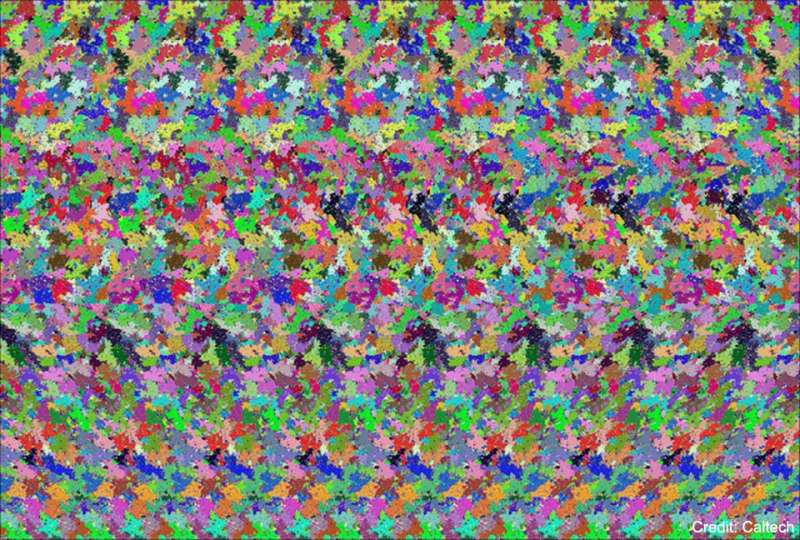Credit & Copyright: Caltech
Explanation:
Sure, you can see the 2D rectangle of colors, but can you see deeper?
Counting color patches in the
featured image, you might estimate that the most
information that this 2D digital image can hold is about
60 (horizontal) x 50(vertical) x 256 (possible colors) = 768,000 bits.
However, the yet-unproven
Holographic Principle states that,
counter-intuitively, the information
in a 2D panel can include all of the information in a 3D room that
can be enclosed by the panel.
The principle
derives from the idea that the
Planck length, the length scale where
quantum mechanics begins to dominate
classical gravity, is one side of an area
that can hold only
about one bit of information.
The limit was first postulated by physicist
Gerard 't Hooft in 1993.
It can arise from generalizations from seemingly
distant speculation that the information held by a
black hole is determined not by its
enclosed volume but by the surface area of its
event
horizon.
The term "holographic" arises from a
hologram analogy where three-dimension images are
created by projecting light through a flat screen.
Beware, some people
staring at the
featured image may not think it encodes just 768,000 bits -- nor even 2563,000
bit
permutations -- rather they might claim it
encodes a
three-dimensional
teapot.
1999 2000 2001 2002 2003 2004 2005 2006 2007 2008 2009 2010 2011 2012 2013 2014 2015 2016 2017 2018 2019 2020 2021 2022 2023 2024 2025 |
Январь Февраль Март Апрель Май Июнь Июль Август Сентябрь Октябрь Ноябрь Декабрь |
NASA Web Site Statements, Warnings, and Disclaimers
NASA Official: Jay Norris. Specific rights apply.
A service of: LHEA at NASA / GSFC
& Michigan Tech. U.
|
Публикации с ключевыми словами:
Holographic principle - голография - информация
Публикации со словами: Holographic principle - голография - информация | |
|
См. также:
| |
